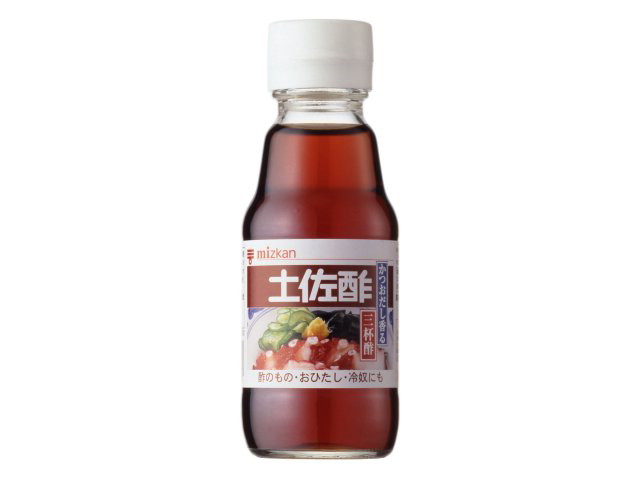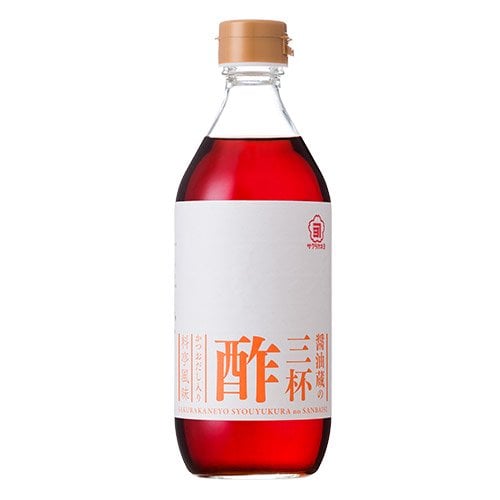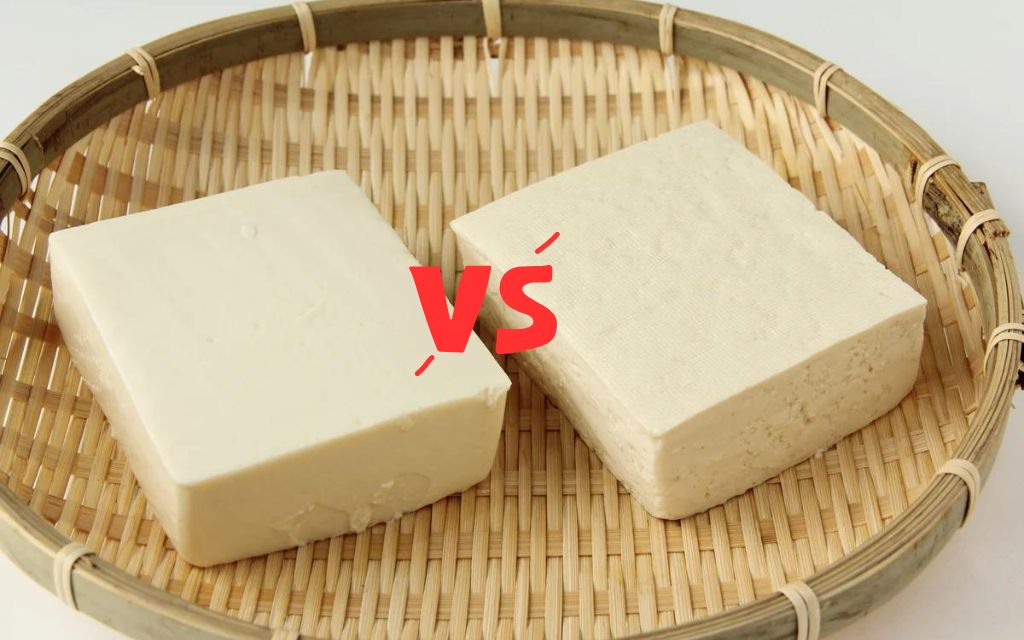
Today, we’re going to compare the two main types of Japanese tofu: kinugoshi vs momen tofu.
Isn’t tofu just tofu? What’s the difference?
Kinugoshi refers to silken tofu, while momen refers to firm tofu.
Read on to learn more about:
- Main differences between kinugoshi and momen tofu
- Types of dishes they’re used in
- How they’re made
- and more!
Let’s get started!
What is Momen Tofu (木綿豆腐) ?
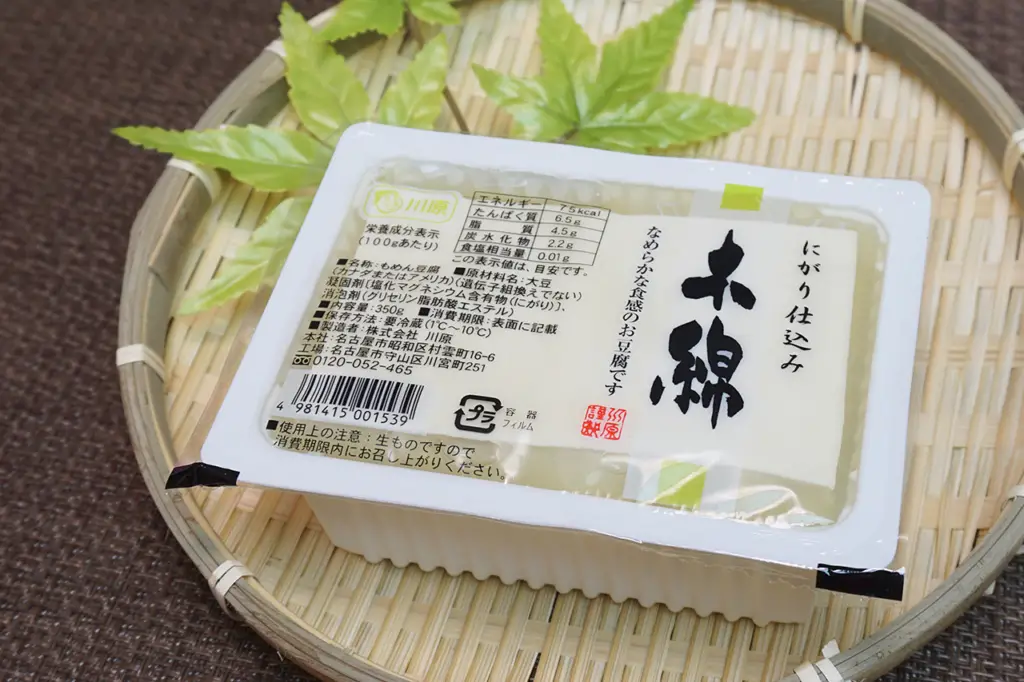
Momen tofu (木綿豆腐) is firm tofu.
The word momen (木綿) literally translates to “cotton”.
It is called ‘cotton tofu’ because a cotton cloth is traditonally used in the production process. The tofu is pressed against the cloth, which creates a rough cotton-like texture on the surface.
Momen tofu has a firm texture and will not fall apart or crumble easily when cooking.
It is the most common type of tofu used in Japan, and sometimes simply referred to as ‘regular tofu’.
What is Kinugoshi Tofu (絹ごし豆腐)?
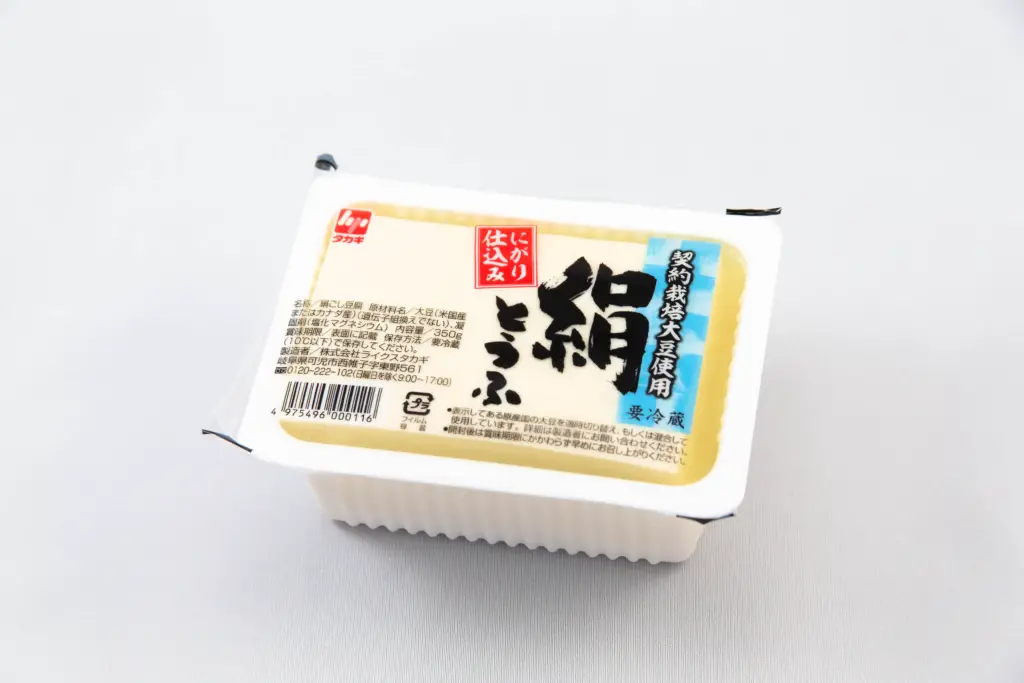
Kinugoshi tofu (絹ごし豆腐) is silken tofu.
It has a very soft, smooth (i.e. silky) texture, and falls apart easily.
The term kinugoshi refers to filtering through a silk cloth, though this is not how the tofu is made.
Compared to momen tofu, kinugoshi tofu has a milder soybean taste, and is a bit sweeter.
Dish types
Momen Tofu dishes
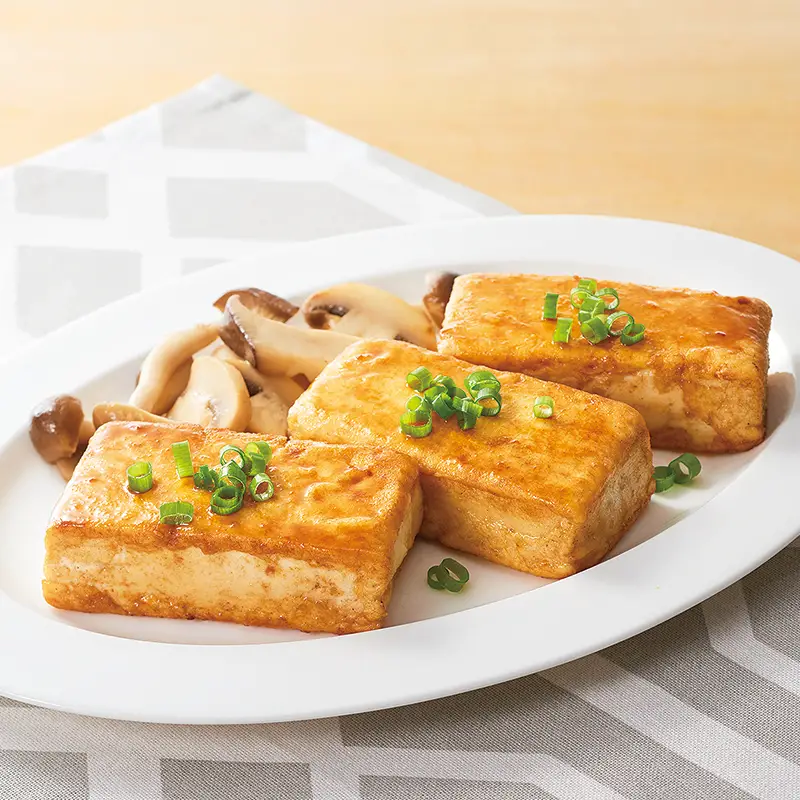
Momen tofu is the more versatile of the two. It is used in a variety of common cooking methods and dishes.
This includes pan-fried tofu (i.e. “tofu steak”), various stir-fried dishes, and deep fried dishes like agedashi tofu.
It is also commonly used in stews (e.g sukiyaki) and soups (e.g. miso soup).
Kinugoshi Tofu dishes
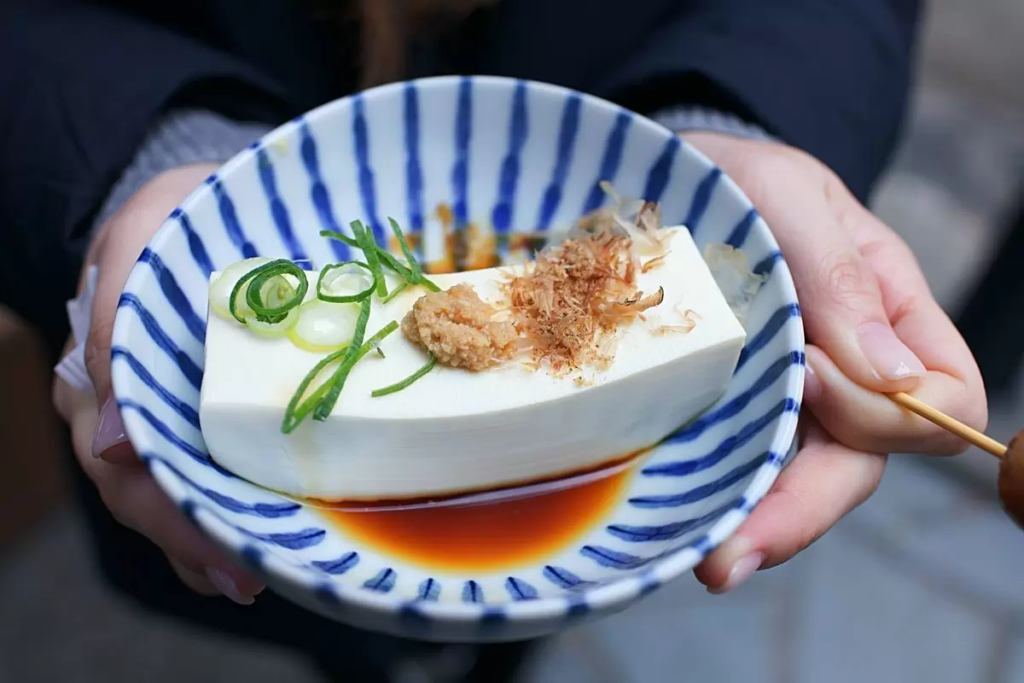
Kinugoshi tofu is not quite as versatile. It is more delicate, and will more easily crumble / fall apart when cooking.
It is often eaten as-is/raw by adding to salads, or simply with some sauce/toppings.
Tofu based desserts will use kinugoshi tofu due to its fine and smooth texture, and sweeter taste.
It can also be used in some dishes where it is OK if the tofu is a bit crushed up. For example, it is often used to make mapo tofu.
Of course, you can also fry or deep fry it. You will just need to handle it much more carefully / gently.
How it’s made
The basic tofu making process all starts with raw soybeans that are soaked, crushed, then boiled to first create soymilk. The soymilk is then processed to make tofu.
The main difference between momen/kinugoshi tofu is that momen tofu is later pressed/squeezed to remove water, while kinugoshi tofu is not. Here are some more details of the process:
Momen Tofu manufacturing process
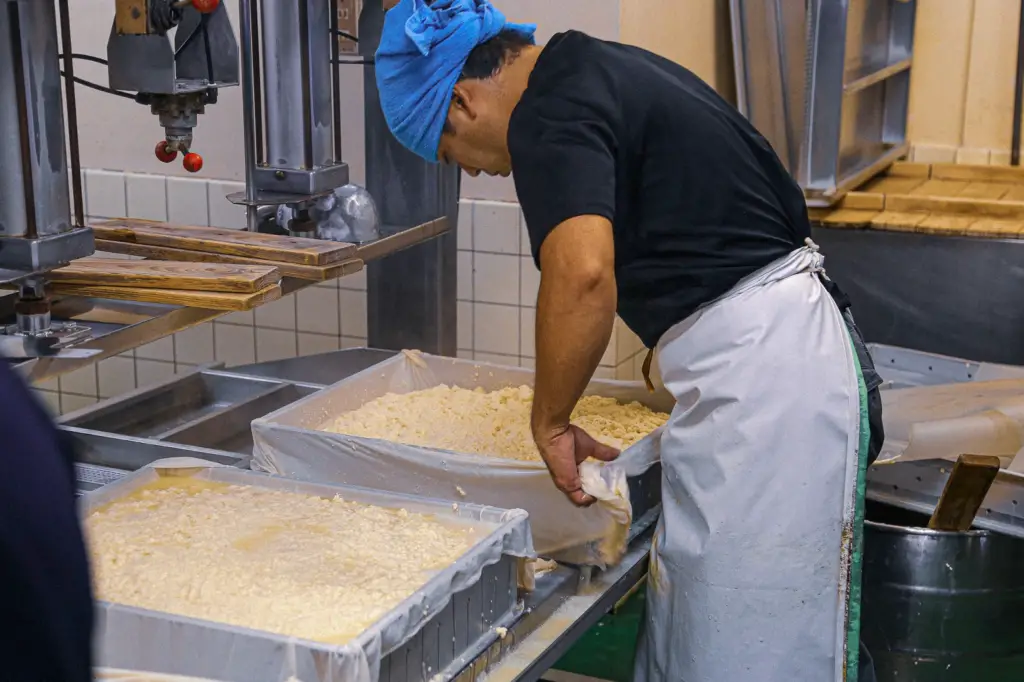
A coagulant is added to soymilk. Once the soymilk has curdled/solidified, it is then broken up again and placed into a cloth-lined mold/box.
Traditionally, the cloth used inside the box was made of cotton.
A weight is then used to press down on the mixture. There are holes/slits around the sides of the box to let liquid be squeezed out.
The resulting product is momen tofu. The tofu is then removed from the box, soaked in cold water, then cut up and packaged for sale.
Kinugoshi Tofu manufacturing process
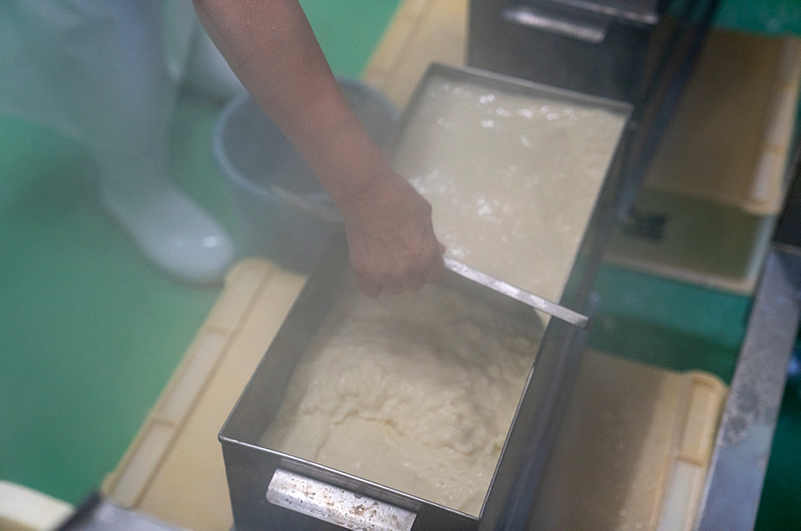
A thick soymilk and a coagulant are mixed together directly in a mold/box (with no holes and not lined with cloth). The coagulant used is stronger than the one used for making momen tofu.
The mixture is allowed to solidify completely without being pressed.
It is then cut, soaked in water and packaged for sale.
Health & Nutrition
Momen and kinugoshi tofu are both very nutritious, but with a few key differences.
Mainly, momen tofu has higher levels of calcium and protein, while kinugoshi tofu is richer in Vitamin B and better for your metabolism.
Below are more details:
Momen Tofu Calories & Nutrition
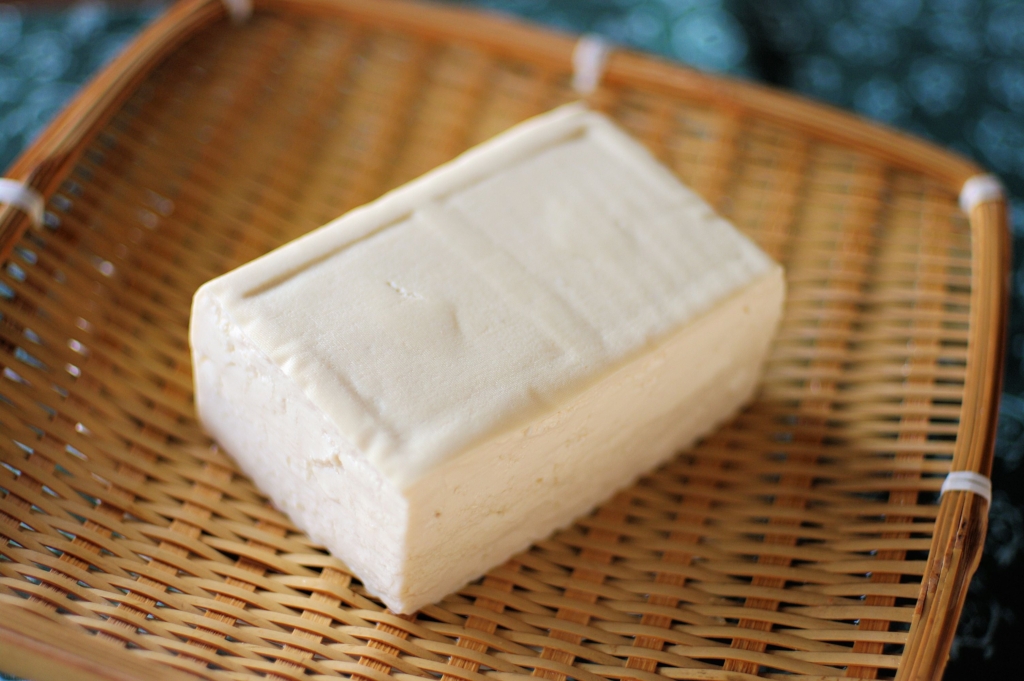
Momen tofu has a lot of water removed from it (and consequently water-soluble vitamins), but contains plenty of protein, calcium and iron.
Compared to kinugoshi tofu, momen tofu contains 20 to 30% more protein.
Nutritional Data:
(per 100g)
- Energy: 80kcal
- Protein: 7.0g protein
- Fat: 4.9g
- Carbs: 1.5g
- Sugar: 0.4g
- Iron: 1.5mg
- Copper: 0.16㎎
- Magnesium: 57mg
Kinugoshi Tofu Calories & Nutrition
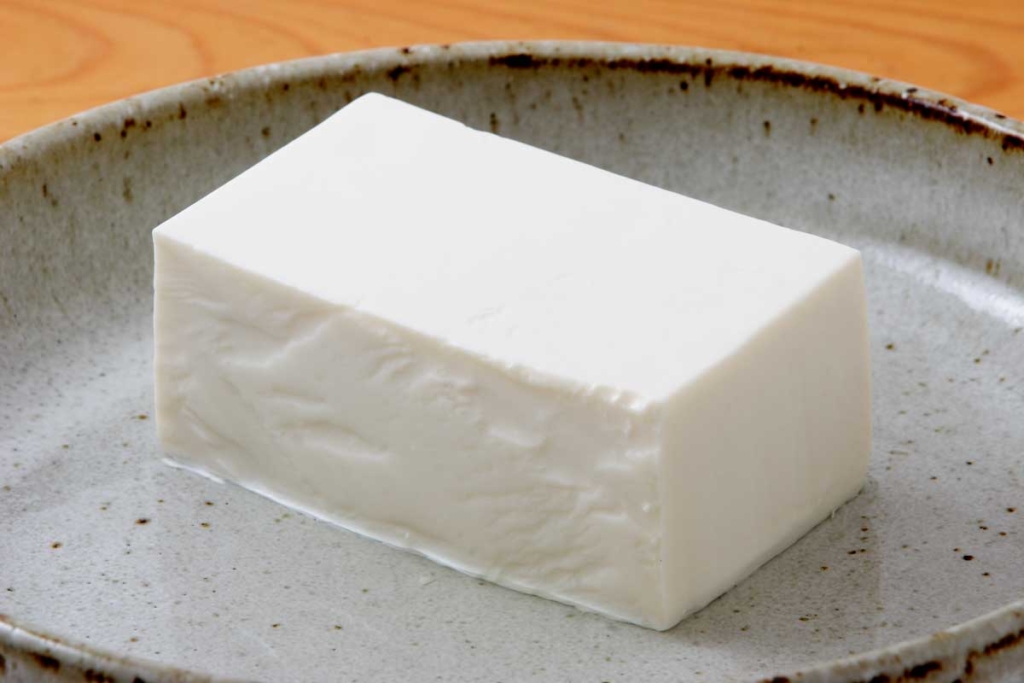
Kinugoshi tofu retains all the water from its production process, so also contains much more Vitamin B, potassium and magenesium compared to momen tofu.
It also contains more carbs and sugar (hence the sweeter taste), but less calories.
Nutritional Data:
(per 100g)
- Energy: 62kcal
- Protein: 5.3g
- Fat: 3.5g
- Carbs: 2.0g
- Sugar: 1.1g
- Iron 1.2mg
- Copper 0.16㎎
- Magnesium 50mg
Source: https://delishkitchen.tv/articles/329
Other types of Japanese tofu
Besides momen and kinugoshi tofu, here are a few other common types of tofu in Japan:
Soft Tofu, sofuto tofu (ソフト豆腐)
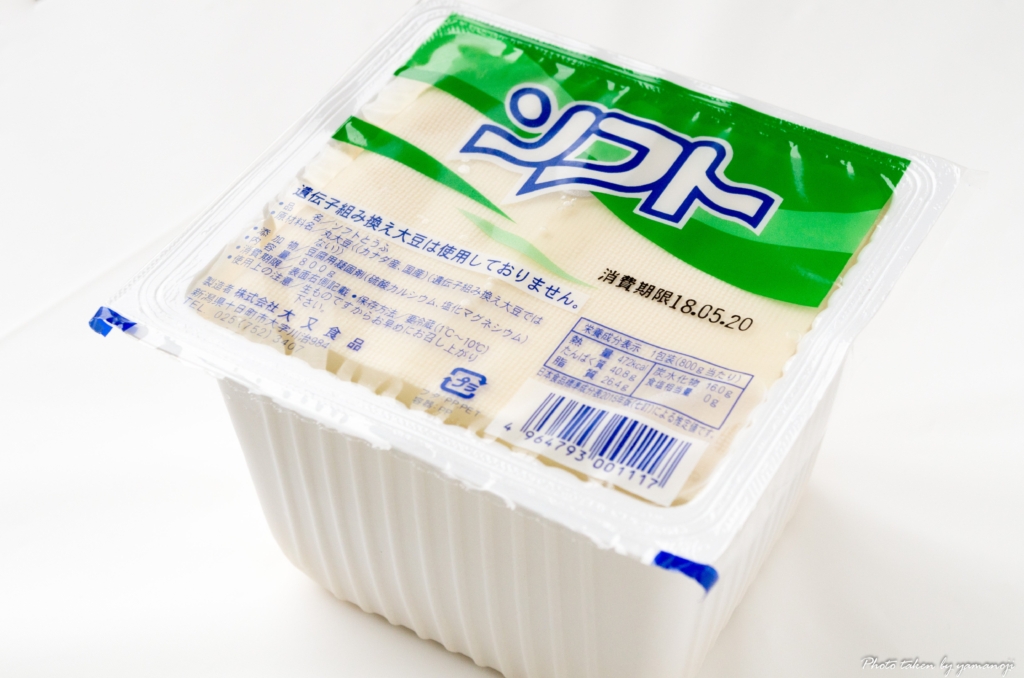
Softer than momen tofu, but harder than kinugoshi tofu. It is made the same way as momen/firm tofu, but pressed less.
Stuffed / Packaged Tofu, juten tofu (充填豆腐)
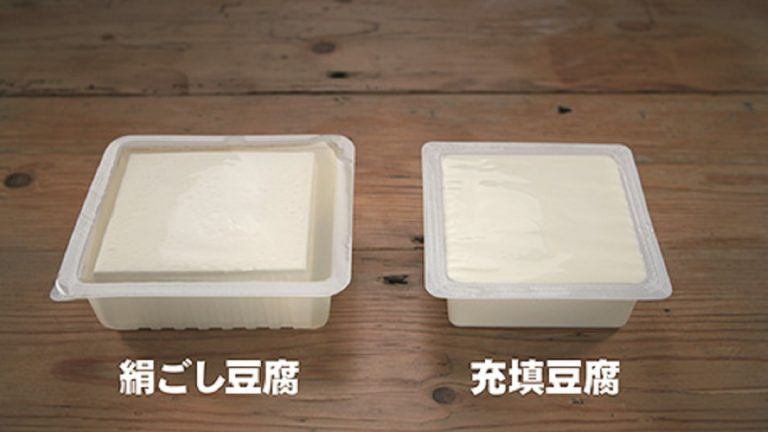
Tofu that is manufactured directly in the final package/container (i.e. as opposed to being made in a big container, then cut/separated, and packaged). The result is that the package is completely filled with just tofu (and no water). It has the same texture as kinu/silken tofu.
Easy to mass produce, cheap, and has extremely long shelf life. Highest level of vitamins and minerals as it is never exposed to water.
Unpressed Tofu, oboro tofu (おぼろ豆腐)
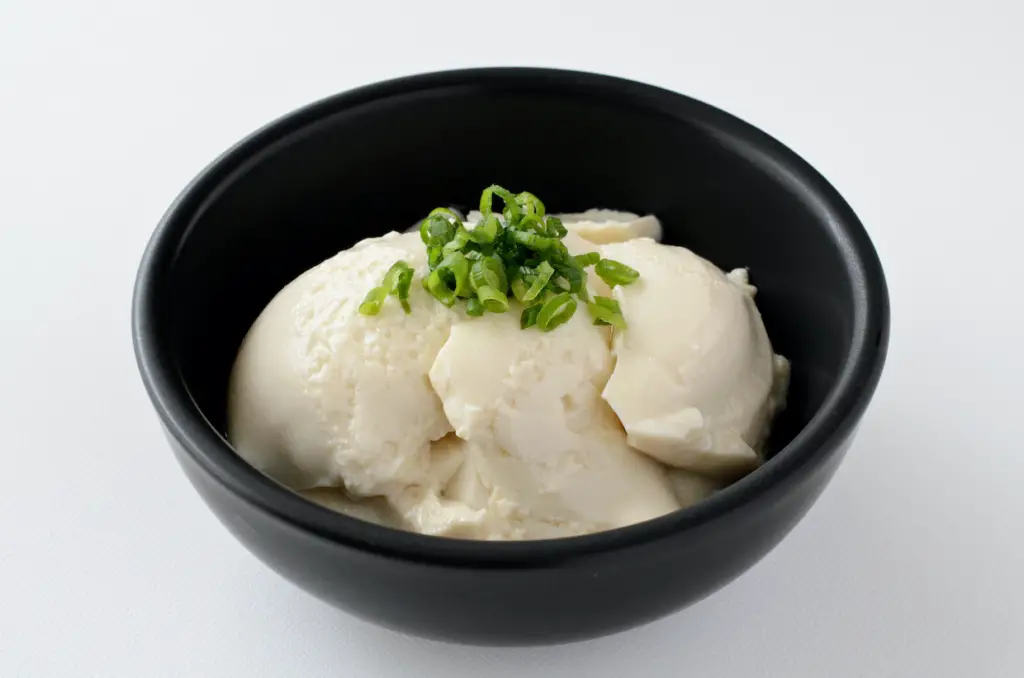
Also called ‘yose tofu’ (寄せ豆腐). Oboro tofu is momen tofu that has not yet reached the final step of being pressed/squeezed. It is basically the tofu curdle.
Hard Tofu, kata tofu (堅豆腐 / 固豆腐)
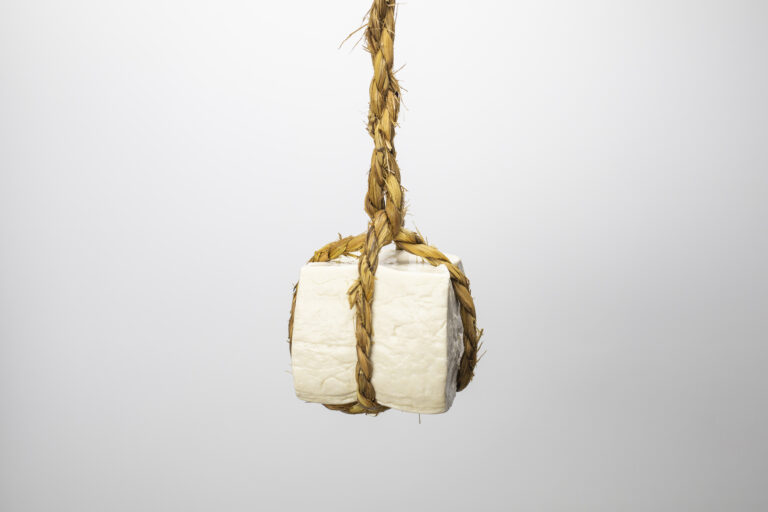
Originally, tofu was very hard so that it could easily be transported. It was so hard that it could be tied up and carried by rope. There are many various types of hard tofu like ‘rock tofu’ and ‘itsuki tofu’. It is still popular in certain regions like Toyama and Ishikawa.
There are plenty of other tofu types in Japan which are derivatives of the types listed above. There is also tofu that is not made with soybeans like egg tofu, walnut tofu, almond tofu, etc. Perhaps will get into these in a later article!
Summary
Now you know the difference between kinugoshi and momen tofu. Hopefully this will help you next time you go to the supermarket in Japan!
Did I miss anything?
Which type of tofu do you prefer? Kinugoshi or momen?
Or perhaps another type?
Let me know by leaving a comment below!
Sources:
Subscribe for free today! Receive cool recipes, my latest Japanese knife picks and learn about Japanese culture. Delivered every other week to your inbox.
